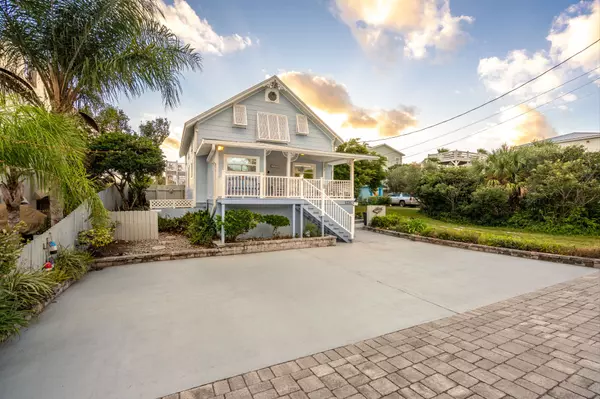The Pros and Cons of 3D-Printed Homes
3D-printed homes are emerging as a potential game-changer in real estate, but like any new technology, they come with advantages and challenges. This innovative technology has the potential to revolutionize the way we think about building houses, offering a mix of excitement and skepticism among homeowners, developers, and industry professionals alike. On one hand, 3D printing promises affordability, speed, and sustainability; on the other hand, it raises questions about durability, aesthetics, and long-term viability. This blog explores both the pros and cons of 3D-printed homes, helping you decide whether this new building practice is the right fit for you.
Affordability: Lower Costs, but Limited Availability
One of the most touted benefits of 3D-printed homes is their affordability. By using automated technology and reducing the need for skilled labor, the overall construction cost can be significantly lower than traditional methods. This can make homeownership more accessible, especially in markets like St. Augustine, where home prices are steadily rising.
However, the lower cost comes with limitations. While 3D printing can reduce construction expenses, the technology is still relatively new and not widely available. In some cases, the upfront costs of acquiring or leasing the specialized equipment can be high, potentially offsetting the savings. Moreover, because the technology is still developing, there are fewer contractors with the expertise to build these homes, which could lead to longer wait times and higher costs in areas without established 3D printing infrastructure.
While 3D-printed homes offer a promising solution to rising home costs, potential buyers should weigh the current limitations in availability and expertise in their area.
Speed: Rapid Construction with Potential Quality Concerns
One of the most significant advantages of 3D-printed homes is the speed at which they can be built. In many cases, these homes can be constructed in a matter of weeks or even days, compared to the months or years required for traditional building methods. This rapid construction can be particularly beneficial in addressing housing shortages in areas like St. Augustine, where the demand for new homes is high.
However, the speed of construction might raise concerns about the quality of the final product. Because the technology is still in its infancy, there is less data available on the long-term durability of these homes. While they can be built quickly, the rush to complete projects might lead to oversights or compromises in the quality of materials and workmanship. Additionally, local building codes and regulations may not yet be fully adapted to accommodate this new technology, leading to potential delays or complications in the approval process.
The speed of 3D-printed home construction is appealing, but buyers should consider the potential quality concerns and regulatory challenges.
Sustainability: Eco-Friendly, but Material Limitations
Sustainability is one of the major selling points of 3D-printed homes. These homes can be built using more environmentally friendly materials, reducing waste and minimizing the carbon footprint of the construction process.
While the materials used in 3D printing are sustainable in some respects, they are currently limited in variety. Most 3D-printed homes are built using concrete or similar materials, which, while durable, may not offer the same insulation properties or aesthetic flexibility as traditional materials. This could lead to higher energy costs for heating and cooling the home or limited options for homeowners who prefer certain design features or finishes.
Even though 3D-printed homes offer environmental benefits, potential buyers should be mindful of the material limitations that may affect energy efficiency and design choices.
Customization: Unique Designs, but Limited by Technology
One of the exciting prospects of 3D-printed homes is the level of customization they offer. The technology allows for unique designs that are difficult or impossible to achieve with traditional construction methods.
On the flip side, the technology is still developing, which means that customization options may be more limited than they appear. The range of materials, colors, and finishes available for 3D-printed homes is still growing, and homeowners may find that their choices are more constrained than with traditional building methods. Additionally, the technology's current limitations may make it difficult to achieve the same level of detail and craftsmanship that many homebuyers expect.
Customization is a key benefit of 3D-printed homes, but prospective buyers should consider the current limitations of the technology in terms of design and materials.
Durability: Strong, but Unproven Over Time
Durability is critical for any homebuyer, especially in a coastal city like St. Augustine, where homes must withstand hurricanes and tropical storms. 3D-printed homes, typically made from concrete, offer high durability and resistance to the elements, making them an attractive option for those concerned about the impact of severe weather.
However, because the technology is relatively new, there is limited data on how these homes will hold up over time. Questions remain about the long-term durability of 3D-printed structures, particularly in harsh climates. While initial tests and builds have shown promise, it may take years or even decades to fully understand how these homes age and whether they require more or less maintenance than traditional homes.
3D-printed homes appear durable, but buyers should consider the unknowns related to their long-term performance and maintenance needs.
Conclusion
3D-printed homes represent a bold step forward in real estate, offering potential solutions to some of the industry's biggest challenges, such as affordability, speed, and sustainability. However, like any new technology, they come with challenges. While 3D-printed homes may not be the perfect solution for everyone, they certainly offer intriguing possibilities worth exploring as we look to the future of homebuilding in our community.
Categories
Recent Posts

Nights of Lights in St. Augustine, FL

Financing & Affordability Trends in St. Johns County: What Buyers Should Know Going Into 2026

A Fall Getaway to Western North Carolina: Our Favorite Escape from St. Augustine

Winter 2025 Buyer’s Playbook: Why Now Might Be the Right Time in St. Johns County, FL

St. Augustine Named One of the Top 10 Best Small Cities in the U.S. by Condé Nast Traveler

A Game-Changer for Homebuyers: Why Affordability Just Took a Big Step Forward

A Day in the Life: What It’s Really Like to Live in Historic Downtown St. Augustine

Builder Incentives Reach 5-Year High — What It Means for Buyers (and Sellers)

Foodie’s Guide to Living in St. Augustine: Local Restaurants, Farmers Markets, and Hidden Spots

St. Johns County Fall Market Update & Forecast

